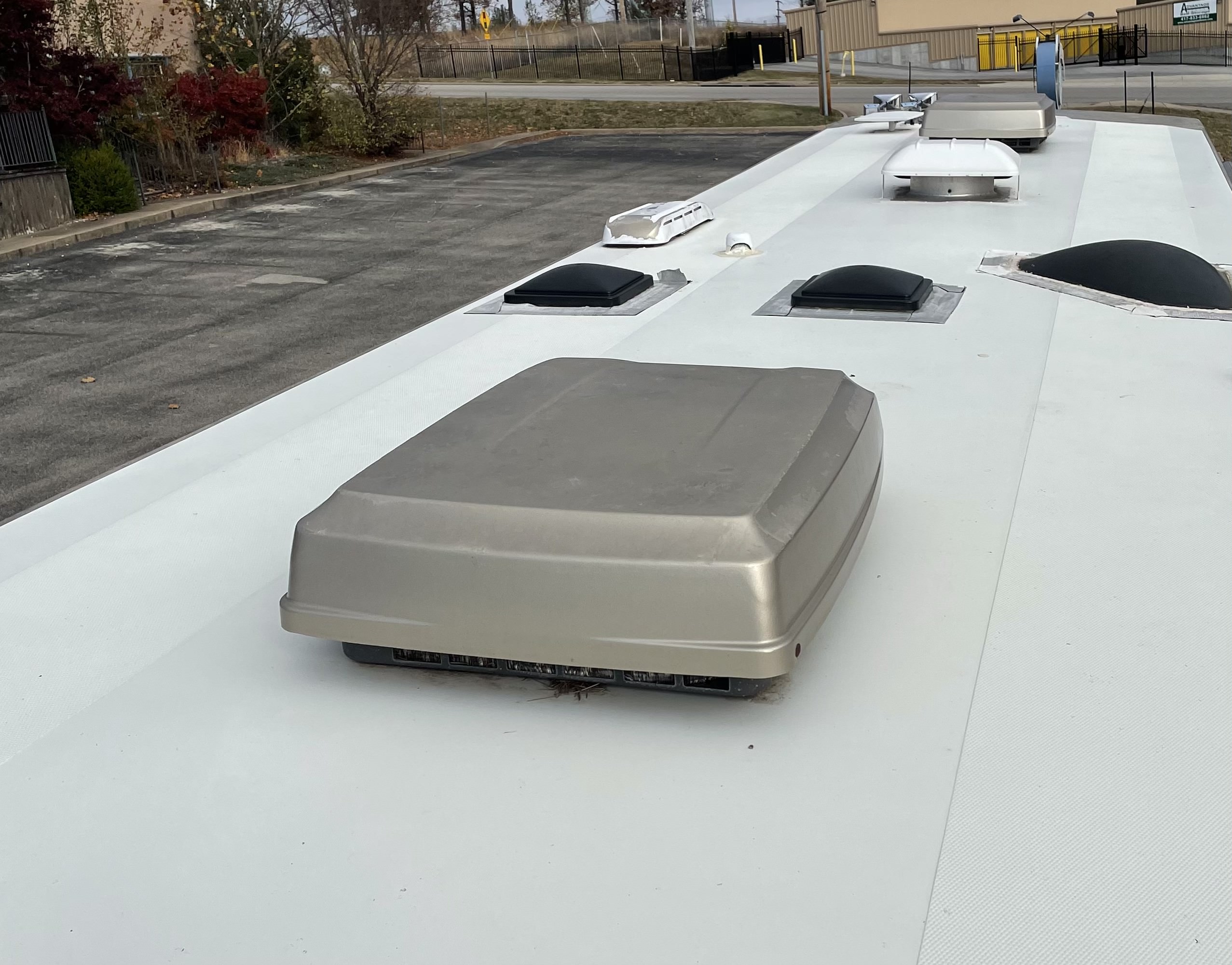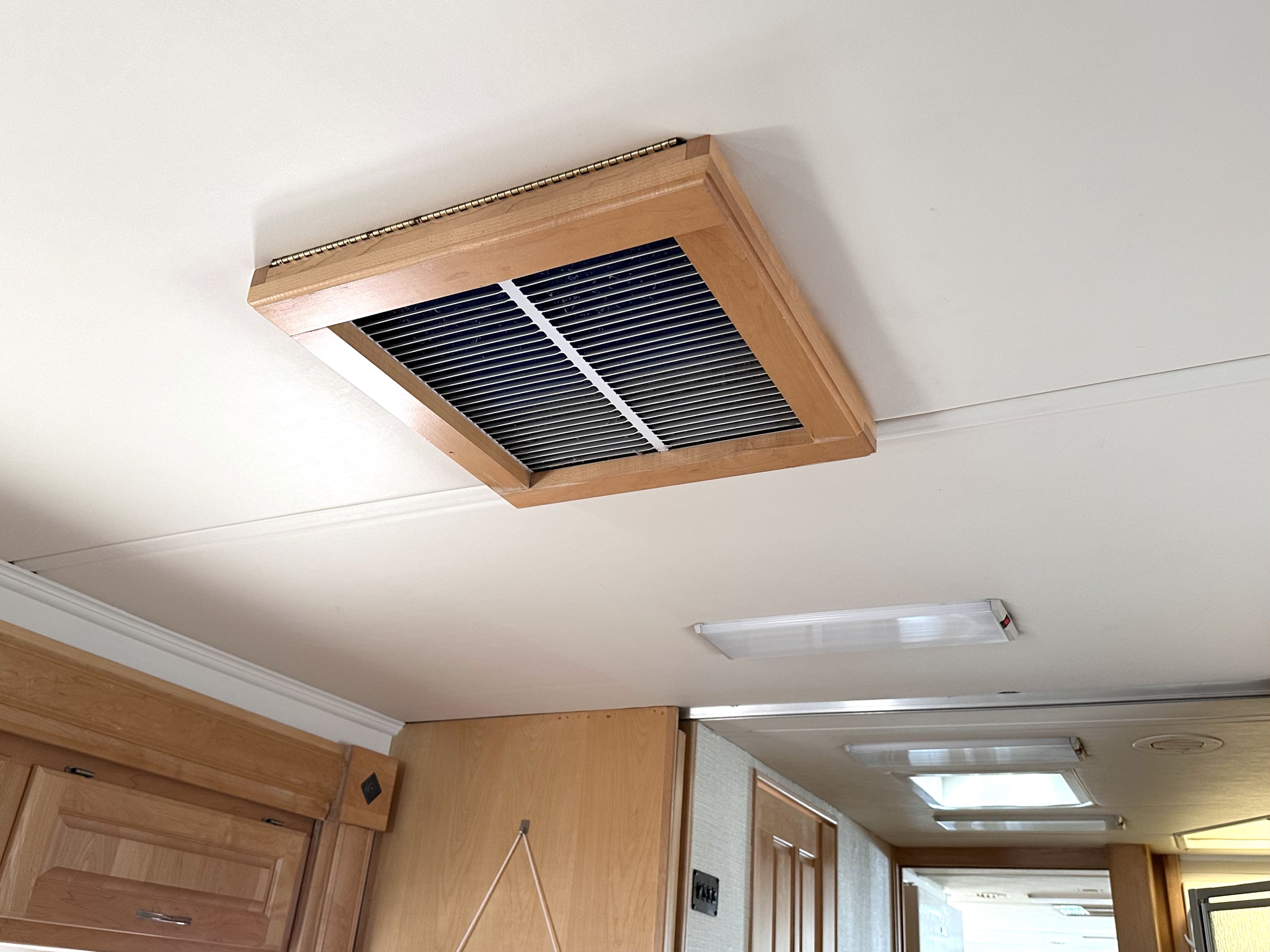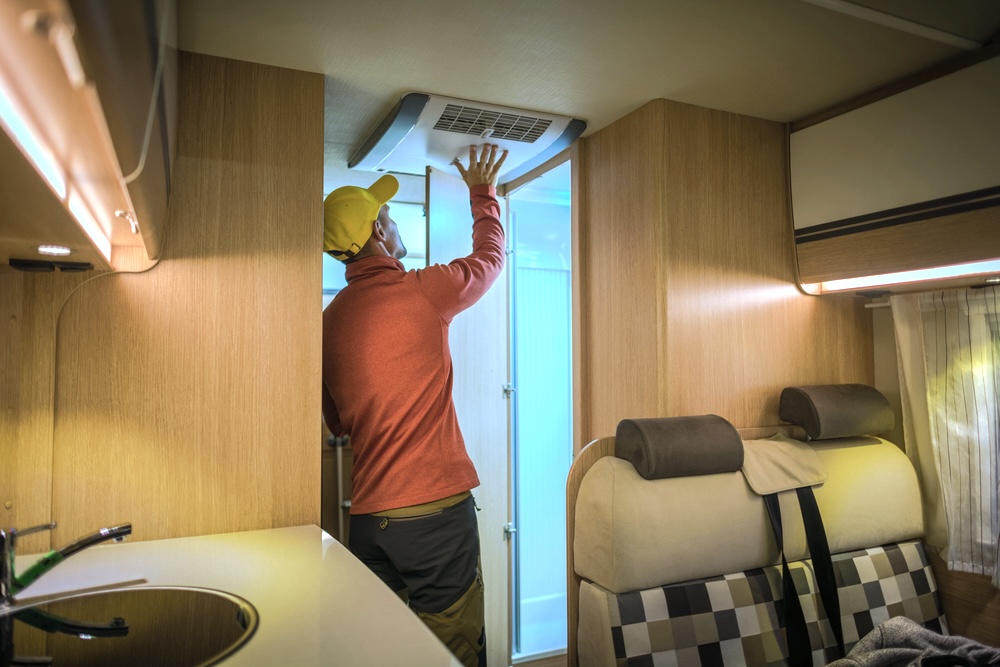
An RV air conditioner that works well and keeps your RV cool makes all the difference in a hot climate, but just like any other part of your RV, it needs regular maintenance to work efficiently and last longer. Neglecting simple maintenance tasks can lead to costly repairs or premature replacement—something no one wants to deal with mid-trip.
Here’s everything you need to know to stay on top of your RV air conditioner maintenance, including expert advice from certified RV technician Jason Jordan, one of the techs listed here on RV Help who regularly services RVs across the U.S.
Why RV AC Maintenance Matters
Unlike residential AC units, RV air conditioners are exposed to constant vibration, changing weather, and limited airflow. That makes them especially vulnerable to wear and tear. Regular RV AC unit maintenance:
Keeps the unit cooling efficiently
Prevents overloading the compressor
Helps you avoid surprise breakdowns
Extends the lifespan of the air conditioner
“Stay on top of it, and it’s simple. Let it go, and that’s when the nightmare starts,” says Jason.
How to Maintain an RV Air Conditioner Unit
Maintaining your RV air conditioner is simpler than you might think. With just a few basic steps—cleaning the filter, inspecting the exterior, and keeping the internal coils free of dirt and debris—you can keep your unit running efficiently and avoid expensive repairs. Below, we’ll walk you through the key maintenance tasks every RV owner should know.
1. Clean or Replace the Filter On a Regular Basis.
A clean filter allows better airflow and helps your AC compressor run more efficiently. Jason recommends cleaning filters monthly or even weekly if you're running your air conditioner nonstop.
 How to clean the filter:
How to clean the filter:
Remove the interior cover from the AC unit
Vacuum the filter gently or wash it with water and mild soap
Let it dry completely before reinstalling
Most RV air conditioner filters are reusable, but if yours is a replaceable type, don’t hesitate to replace it when it gets dirty. “Don’t try to save money by stretching out a filter—it ends up costing you more when your AC breaks down,” Jason warns.
Pro Tip: If you’ve got pets or allergies, clean your filter more often to avoid allergens in the air.
2. Regularly Inspect the Exterior Unit (Safely).
Before you begin, make sure your RV is parked on level ground and the roof is dry. If you're physically able and comfortable climbing up, you can remove the plastic AC shroud to inspect the unit. Always turn off power to the unit first.
Look for:
Bird or squirrel nests inside the housing
Chewed wires or damaged plastic
Physical damage from tree limbs or hail
Jason advises caution: “If you can get up there and feel safe, go for it—but if not, don’t risk it. It doesn’t take much to lose your balance and end up on the ground.”
He adds, “I’ve seen squirrels chew on wires and birds build nests inside AC units. That kind of thing can really mess up the system.”
Never handle exposed wires unless you’re trained to do so—leave that to a professional if anything looks questionable.
 3. Clean the Coils and Exterior Housing Annually or Semi-Annually.
3. Clean the Coils and Exterior Housing Annually or Semi-Annually.
To do this, start by removing the AC shroud (the plastic cover on top of your RV) and clearing out any debris that’s built up inside—leaves, sticks, bugs, or even bird or squirrel nests. This kind of buildup is common, especially if you’ve been parked under trees.
Next, check the coils. “If your coils are dirty, they need to be cleaned,” Jason says simply. “The cleaner you get it, the better it is.”
How to clean the coils:
Use a coil cleaning brush to remove dust and grime.
Spray a general-purpose coil cleaner (available at most hardware stores).
Rinse carefully. Jason recommends using a small handheld pump sprayer instead of a hose to avoid damaging electrical components.
If you RV full-time or camp in dusty areas, clean your AC housing and coils every 6 months. Otherwise, once a year is usually enough.
4. Watch for Warning Signs.
Keep an eye out for early indicators that your air conditioner might be struggling. These can include unusual noises, weak airflow, the unit not cooling as effectively as it used to, or signs of electrical issues like flickering power. If you notice any of these symptoms, it’s best to call a technician.
As Jason explains, if the AC “sounds off or isn’t cooling properly, that’s when a technician needs to step in.” He cautions that working on the internal electrical or mechanical parts can be dangerous: “It can get dangerous for the user to get into the electrics of it—I’ve been zapped even as a professional.”
5. Make Smart Upgrades.
In addition to regular maintenance, a few small upgrades can help your RV air conditioner run more efficiently and reduce strain on the system.
One simple improvement is switching to a white AC cover if your unit has a dark one. Jason notes, “A white cover makes a real difference,” especially in hot climates where reducing heat absorption can significantly improve performance.
Parking in the shade whenever possible also helps keep the unit from working overtime—but Jason reminds RVers to be cautious of the tradeoff: trees can also lead to debris buildup that requires more frequent cleanings.
If your rooftop units can’t keep up with the heat, especially in full sun or in the southern U.S., consider adding a supplemental portable or window unit to help take the load off (but keep in mind that you may need to plug it directly into your campsite’s power source, as your RV’s electrical system may not be able to handle running an additional air conditioning unit at the same time as the factory-installed units).
6. Check for Air Leaks in Ducting.
If your RV has ducted air conditioning, sealing any gaps or joints with HVAC foil tape can help improve airflow and cooling efficiency. Over time, seals can weaken, allowing cold air to escape into the ceiling cavity instead of reaching your vents.
 7. Keep the Condensation Drain Clear.
7. Keep the Condensation Drain Clear.
Your rooftop AC unit should be dripping water outside when it’s running in humid weather. That’s condensation draining from the evaporator coil. If the drain becomes clogged, water can back up and leak into your RV.
To prevent this:
Locate the drain hole on the roof near the AC unit
Use a pipe cleaner or soft brush to remove debris
8. Know When to Call in a Professional.
Some Class A motorhomes have AC systems with a condensate pump instead of a passive drain. These systems may require internal cleaning to prevent fungal growth inside the lines. Flushing them with bleach is one method, but Jason warns that bleach can corrode the coils if not properly handled.
If you have one of these systems, it’s best to have a certified RV technician clean and sanitize the lines professionally.
Final Thoughts on RV Air Conditioner Maintenance
Maintaining your RV air conditioner requires a small time investment, but the payoff is worth it: better cooling, fewer breakdowns, and a longer lifespan for your system. Clean or replace your filters regularly, check for signs of debris or damage, clean the coils at least once a year, and pay attention to how your system sounds and performs.
And if something seems off, don’t wait—reach out to a professional. You can search RV Help to find certified mobile RV technicians near you who can inspect or repair your AC unit wherever you're parked.
FREE RV Maintenance Checklist Spreadsheet
A printable and editable spreadsheet to help you stay on top of RV maintenance tasks. Organized by frequency, with space to add notes and track completion dates, so you can keep your RV in top condition year-round.
By submitting this form, you'll receive our newsletter and the free download. You can unsubscribe at any time.
FREE RV Maintenance Checklist Spreadsheet
A printable and editable spreadsheet to help you stay on top of RV maintenance tasks. Organized by frequency, with space to add notes and track completion dates, so you can keep your RV in top condition year-round.
By submitting this form, you'll receive our newsletter and the free download. You can unsubscribe at any time.